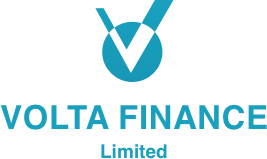Volta Finance Ltd (LON:VTA) has released its May 2020 monthly report.
AXA IM has published the Volta Finance monthly report for May. The full report is attached to this release and will be available on Volta’s website shortly (www.voltafinance.com).
The following amendments have been made to the Net Asset Value as at 31 May 2020 announcement released on 10 June 2020 at 17:00:00hrs (BST), to subtract from the Net Asset Value the first interim dividend of €0.10 per share declared by the Company as the ex-dividend date was 21 May 2020.
Volta’s NAV as at the end of May 2020 has been adjusted from €204.6m to €200.9m and the NAV per share from €5.59 to €5.49.
The full amended text is shown below.
PERFORMANCE and PORTFOLIO ACTIVITY
May was the second month of good performance after April, helping further to recover the mark-to-market impact of the COVID-19 pandemic. Volta’s NAV* total return performance in May was +4.5%.
The monthly performances** were, in local currency: +1.9% for Bank Balance Sheet transactions, +5.7% for CLO Equity tranches; +5.8% for CLO Debt; -3.5% for Cash Corporate Credit deals (this bucket compromises of funds that have a one-month delay in publishing their NAV); and +0.8% for ABS.
At the end of the month, the average price for CLO Equity tranches was 42.6% and 38.3% respectively for USD and Euro positions, 63.2% for USD CLO debt (only one new Euro CLO debt position was purchased in the secondary market in May).
Even though almost all market participants revised downward the impact of the COVID 19 crisis in terms of the outlook for default for loans and high yield markets, prices for our holdings are still very depressed. We believe that there is more to come in terms of price appreciation. For example, the pricing of new CLO BB tranches tightened by almost 150bp between the last days of May and the time of writing this commentary.
Concerning defaults, at the end of May, the Last-12-Month default rate is close to 3.5% for US loans and slightly below 2% for European loans. Expectations for the end of 2020 are in the area of 5% for the U.S. and 3.5% for Europe (far lower than levels feared only a few weeks ago when some investors expected rates close to 10%).
In the same vein we are accumulating, day after day, evidence that the most active/solid CLO managers can re-arrange their books, sometimes being able to reduce the CCC bucket without any significant cost in terms of subordination (as measured by CLO Over Collateralization tests). Using May trustee reports as a reference, close to 20% of US CLOs were breaching their reinvestment test (the test that causes a partial diversion of the cash flow due to the equity tranche). None of the USD CLO Equity positions held in Volta were breaching such tests.
Volta resumed investing in May through the purchase of €3m nominal of a newly issued Euro BB CLO tranche. This tranche was purchased at 90% of par with a DM at 911bps. With a coupon formula at Euribor +725bps and when considering where the most recent Euro BB tranches have been priced, it is probably already trading close to par.
As at the end of May 2020, Volta’s NAV was €200.9m or €5.49 per share. The Company will pay a 10 cents dividend per share to shareholders on 16th June.
The month-end cash position was €10.7m. Considering the payment of the dividend and the necessity to maintain a working capital balance to cover potential margin calls from currency hedging positions and further capital calls from pre-existing investments, Volta is almost fully invested.
Regarding the medium to long term performance outlook, the most recent weeks have confirmed to us that we might have a pace of defaults that is almost compatible with the maintenance of full payments for Volta’s CLO Equity position. It may be that some of our deals suffer from time to time some partial diversion of cash flows but, it is now expected to be the exception rather than the norm and highly attractive returns should be derived from the current portfolio in due course.
*It should be noted that approximately 11.8% of Volta Finance’s GAV comprises investments for which the relevant NAVs as at the month-end date are normally available only after Volta’s NAV has already been published. Volta’s policy is to publish its NAV on as timely a basis as possible to provide shareholders with Volta’s appropriately up-to-date NAV information. Consequently, such investments are valued using the most recently available NAV for each fund or quoted price for such subordinated note. The most recently available fund NAV or quoted price was for 6.2% as at 30 April 2020, 5.6% as at 31 March 2020.
** “performances” of asset classes are calculated as the Dietz-performance of the assets in each bucket, taking into account the Mark-to-Market of the assets at period ends, payments received from the assets over the period, and ignoring changes in cross-currency rates. Nevertheless, some residual currency effects could impact the aggregate value of the portfolio when aggregating each bucket.



